SharkFest 2023: A guide to every new special for every kind of shark lover
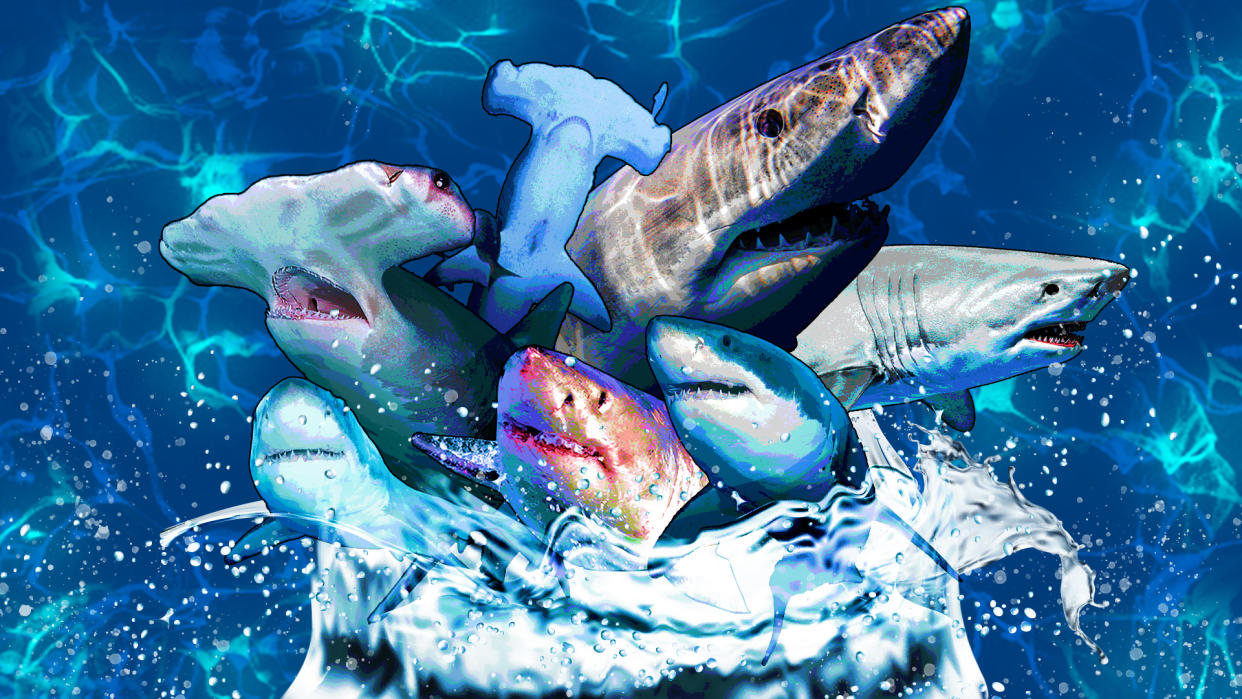
"Oh bleep. Oh bleep. Oh bleep."
Marine ecologist Mike Heithaus can laugh, now, when he's asked what was going through his mind as his team reeled in a great hammerhead for tagging off the coast of Florida while a second hammerhead circled it. The species is known to cannibalize their own.
Cameras were rolling for the new SharkFest special Bull Shark vs. Hammerhead when the line got caught on a crab trap in the water. If they couldn't free it and bring the hooked shark to the boat soon, the hammerhead would either exhaust itself fighting for release or become prey.
"You kinda have to be that race car pit stop: very deliberate, fast and methodical," Heithaus tells Yahoo Entertainment from his office at Florida International University (FIU), noting that he's looking at the hook bent nearly straight. "You're just hyper aware of what's going on to make sure that everything you're doing is to help the animal stay safe and healthy." Even if it means asking a member of the film crew to drop the camera to lend another set of hands.
That kind of teamwork is the heart of SharkFest, National Geographic's month-long event that helps scientists like Heithaus and great white expert Greg Skomal further their own research while also partnering with colleagues and PhD candidates to advance theirs. The annual science fare begins July 2, with more than 20 hours of new programming streaming that day on Disney+ and Hulu. Below is our guide to this year's specials and spinoffs.
If you're fascinated by surprising hunting tactics, watch…
Bull Shark Bandits
In Weipa, a town in remote northeastern Australia, fishermen claim they're now losing up to 80% of their catch to bull sharks — who steal the tuna right off the hook as it's reeled in. Johan Gustafson and Mariel Familiar López investigate the raids to find out whether a small number of bulls have begun to identify and target individual boats, as some fishermen believe, or how this depredation behavior (patiently stalking what will be an easy meal to conserve energy) has been learned by many bull sharks in the area. You'll be holding your breath when the dive team decides to test an experimental noise-canceling cage made entirely of plastic. A great idea to get closer to the easily spooked sharks, just maybe not in a raging current!
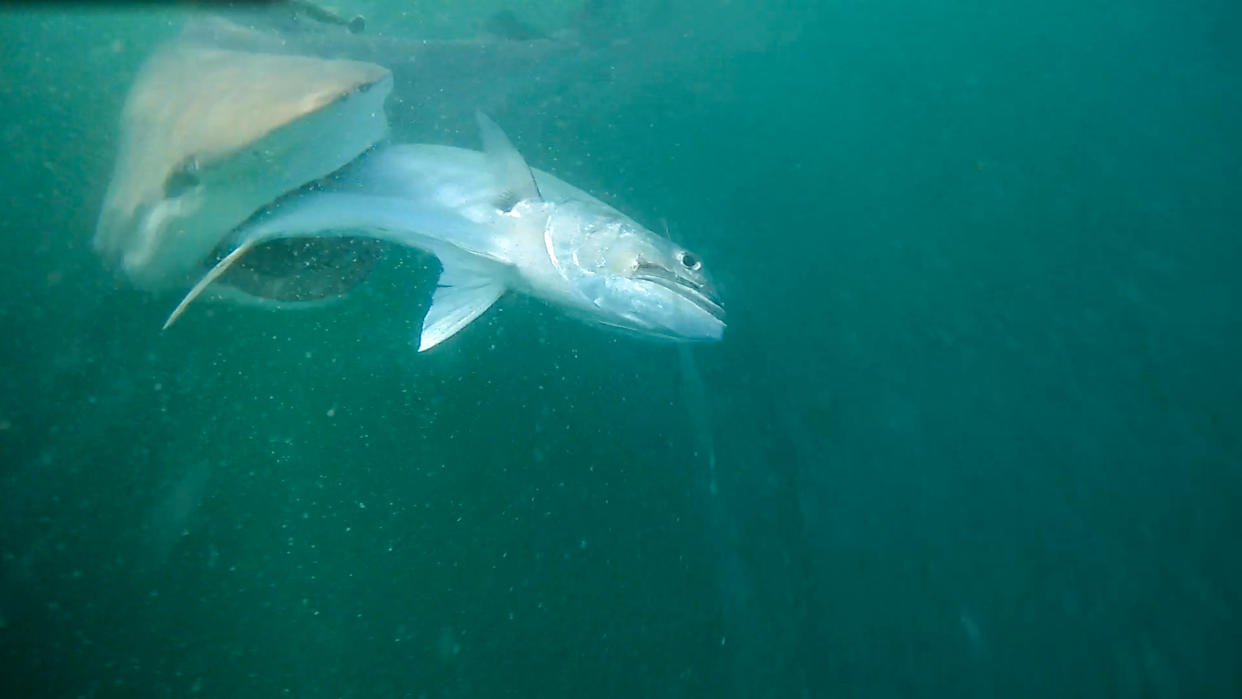
Bull Shark Bandits airs July 2 at 8 p.m. on National Geographic, July 7 at 10 p.m. on ESPN2 and July 24 at 10 p.m. on Nat Geo Wild.
Shark Eat Shark
Anyone who has ever watched a special set in South Africa thinks of great whites breaching to ambush seals. So you may be as stunned as experts Lacey Williams, Enrico Gennari and Neil Hammerschlag are when they uncover what percentage of a white shark's diet in Mossel Bay — home of Seal Island — is actually other smaller sharks. Sampling and analyzing great white muscle tissue provides concrete evidence, but we applaud Gennari for fitting smooth-hounds, a favorite item on the menu it turns out, with an innovative tag that sends a signal when they've been eaten. Folks who've followed the saga of orcas killing great whites in South Africa and chasing them from areas that were once hotspots will want to know that a pod makes an appearance here.
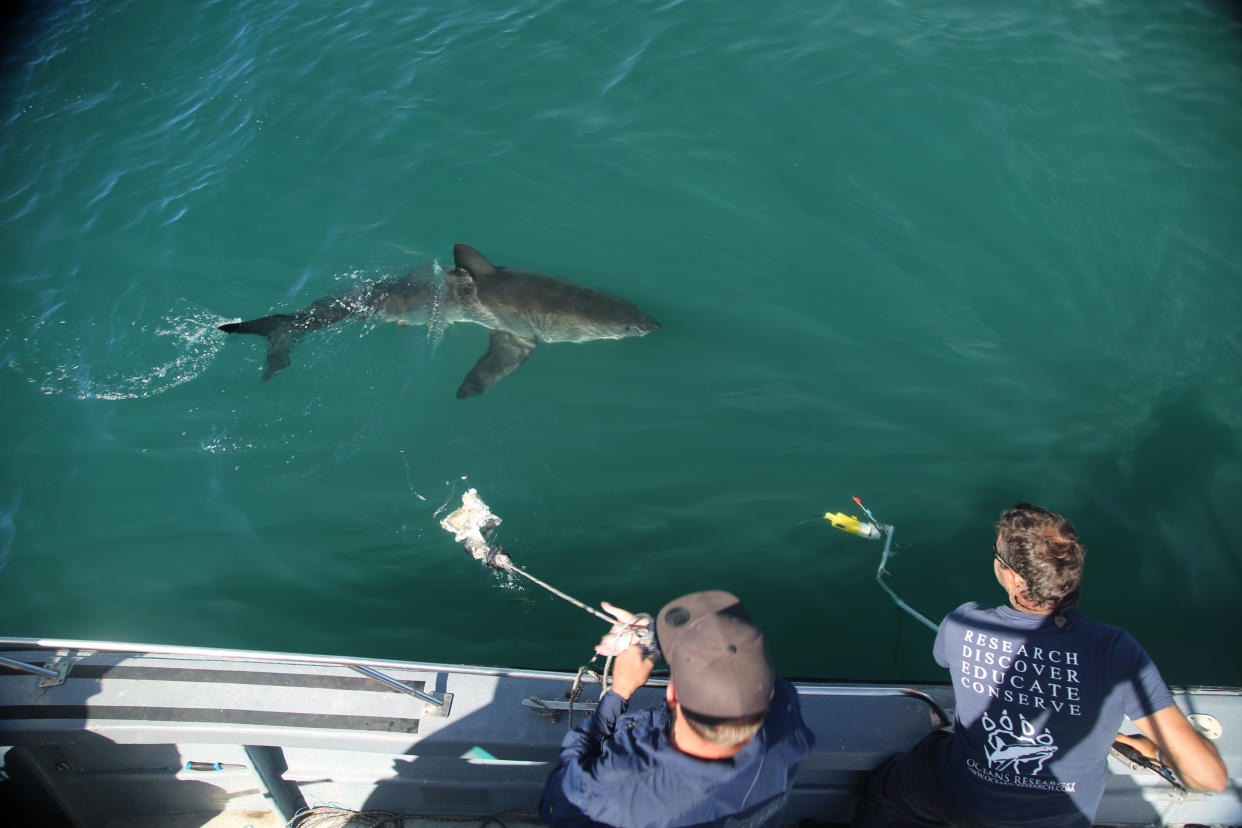
Shark Eat Shark airs July 2 at 9 p.m. on National Geographic and July 26 at 10 p.m. on Nat Geo Wild.
Return of the White Shark
For more than a decade, Skomal, head of the Massachusetts Shark Research Program, has been tagging great whites in the waters off of Cape Cod where they're drawn to a rebounded gray seal population. Knowing when and where white sharks hunt can make their activity more predictable, which could help reduce interactions with beachgoers (the most recent attack on Cape Cod, in 2018, was fatal). Skomal's team has long suspected that white sharks hunt seals close to shore. "Early on in our research, we would discover white sharks beached high and dry, and they were completely healthy animals otherwise, and we couldn't understand why," he says. "It became clear to us that these sharks must be hunting in really shallow water and they make mistakes. There's such an energetic payoff to finding and eating a seal that it's worth the risk to them."
The special's never-before-filmed footage of a great white nearly beaching itself to retrieve a kill that's drifted into two feet of water seems to support that hypothesis. Equally as noteworthy: Two more white sharks show up and the three take turns feasting. To date, that behavior has only been associated with great whites feeding on a large whale carcass. "Typically in the case of a dead seal, one large dominant shark would drag it out to deep water and move it away from the others. Here, they all agreed to get along," Skomal says. "That is something I don't think anyone in science anticipated."
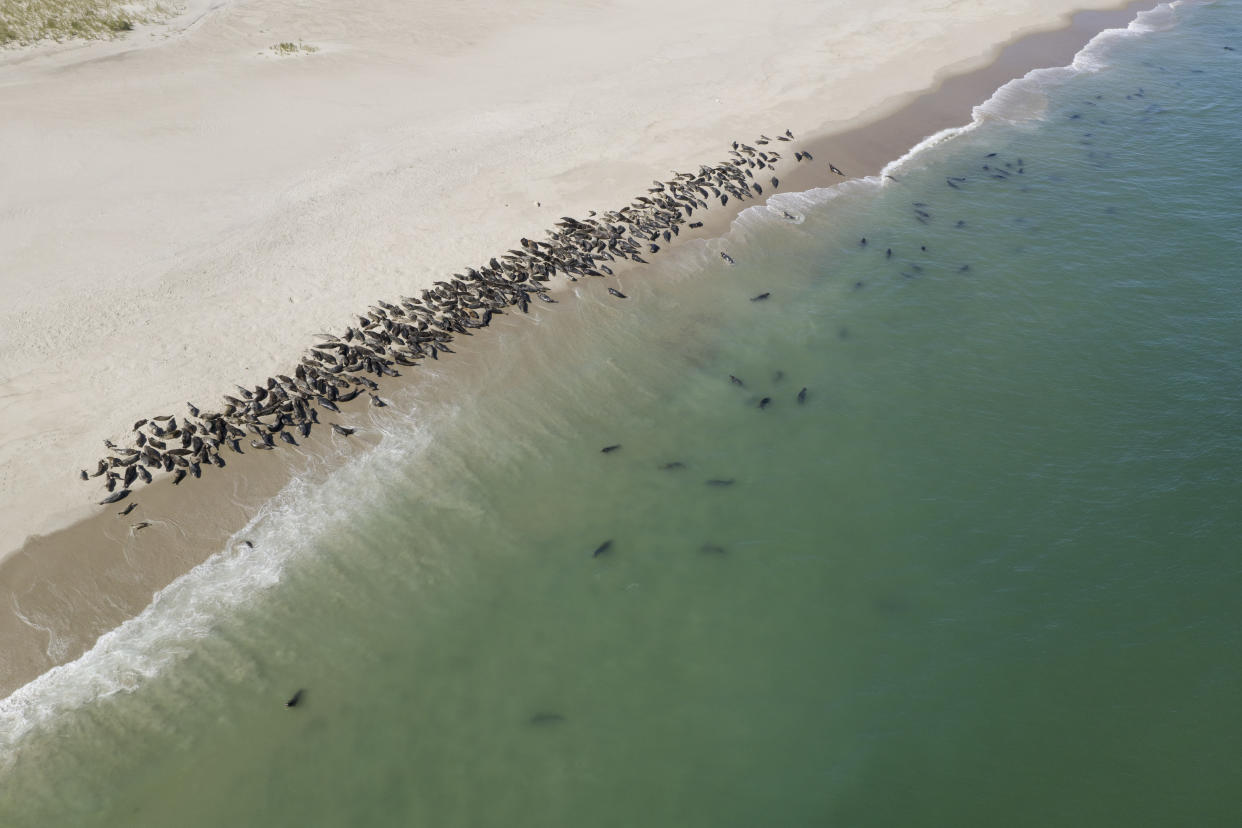
Also spotlighted is the heated debate over how to handle the estimated 50,000 gray seals in the Cape Cod area. A protected species since 1972, they're a conservation success story. But Skomal understands that fishermen are conflicted: They view seals as competitors and a threat to their livelihoods and worry about their families swimming with the white sharks that follow. Some call for a seal culling. "My argument with many of them is, ‘Let's let the white sharks do their job,'" Skomal says. "This is what they've evolved to do. White sharks are here to reduce the seal population to something that is manageable and in equilibrium with the ecosystem. Without the white shark, seals are gonna continue to explode."
Return of the White Shark airs July 3 at 9 p.m. on National Geographic and July 25 at 8 p.m. on Nat Geo Wild.
If you're riveted by survivor stories, watch…
Saved From a Shark
Here is another great debate: Do dolphins and whales deliberately intervene to save humans from shark attacks, or are they trying to scare off a shark so it doesn't turn on them? You can guess which side the grateful survivors in this gripping hour argue. Most convincing is Nan Hauser, a noted whale biologist, who, in decades of research, had never had a humpback push her, raise her out of the water on its head and try to tuck her under its pectoral fin. Only when she saw a tiger shark below did she finally understand why it was happening then. Actual footage of the Cook Islands encounter remains mesmerizing.
Heithaus, who began his career as a dolphin biologist, offers commentary in the special and admits even he may be swayed by the experience of New Zealand lifeguards who were surrounded by a pod of dolphins. They circled the foursome tightly and aggressively slapped their tails on the water in a show of strength to a lurking great white. "It did seem like wait, maybe these dolphins really did say, ‘Hey, those people are in trouble, and we're not big fans of white sharks, so we'll keep 'em safe,'" Heithaus says. "I don't think it's an answer that's always one or the other," he adds. "At some level, it doesn't matter whether dolphins were responding to sharks in ways to protect the person or to protect their own young or themselves. It just shows you these are really smart animals, incredibly well-adapted to their environment and aware of the threat or not that sharks might pose." (Why that clarification? "Dolphins sometimes just mess with other animals to play," he says. "Maybe they're messing with a shark that wasn't a threat.")
Saved From a Shark airs July 2 at 10 p.m. on National Geographic and July 27 at 8 p.m. on Nat Geo Wild.
When Sharks Attack 360 and When Sharks Attack... and Why
The popular series When Sharks Attack, which premiered 10 years ago, spawns these two spinoffs. Both take the art of combining harrowing testimonials, chilling reenactments and expert sleuthing to another level. In the premiere of the six-episode When Sharks Attack 360, Florida Atlantic University's Stephen Kajiura leads an international team of scientists trying to figure out why a man snorkeling to collect crabs for his dinner in 2021 became the first recorded shark attack victim in San Mateo County, Calif. in nearly 35 years — and whether sharks are really attracted to "yum yum yellow." The real star of the show is the visual effects: Sharks swim right up to Kajiura in the Shark Lab when information gets technical.

The eight-episode When Sharks Attack… And Why, meanwhile, looks at mysteries like what led to New York's unprecedented six attacks last summer or New Caledonia's record five attacks in 2016, and why attacks always spike in Hawaii during the month of October (aka Sharktober). Experts explore all possible factors — down to whether sharks would be attracted to triathletes urinating in the ocean! — before making a determination. For behavioral and movement ecologist A-bel Gong (who uses they/them pronouns), a member of Minorities in Shark Sciences (MISS) with whom Nat Geo partners, the series celebrates the endless curiosity that fuels scientists. "I actually learned a lot prepping for my episodes!" they admit.
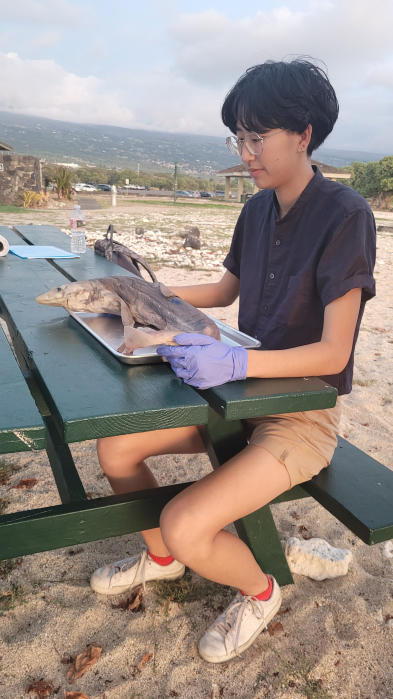
Gong, the Climate Research Manager at the San Diego Regional Climate Collaborative, reached out to an old geology professor to fully understand the chemical processes of vog (smog with volcanic dust) so they could weigh in on whether it would affect the pH level in Hawaiian waters enough to impair tiger sharks' speed and make them desperate for slower prey. They contacted a mentor to brush up on swimming mechanics so they could say if the distance between the New Caledonia attacks could have been covered by one rogue shark.
When Sharks Attack 360 airs July 3 at 8 p.m. on National Geographic, with new episodes each night through July 11, and July 30 at 6 p.m. on Nat Geo Wild; When Sharks Attack... and Why airs July 6 at 9 p.m. on National Geographic, with new episodes each night through July 12, and July 26 at 8 p.m. on Nat Geo Wild.
If battle royales get your adrenaline going, watch…
Sharks vs. Dolphins: Bahamas Battleground
In Bimini, roughly 30% of dolphins show scars from a shark bite. That common face-off has interested Heithaus since his early days studying, as he puts it, "how dolphins navigated getting enough food without becoming food" for tiger sharks in Australia. Now, he and Valeria Paz head to the Bahamas to get bite impressions from tigers, bulls sharks and great hammerheads to see how they match the scars — and to better understand what size shark would be attempting the nibbles. The highlight is the debut of Gooey, a 200-lb. dolphin decoy that comes face to peduncle with a bull shark. "This has been decades of 'I would love to do this,'" Heithaus says with a laugh. The "crazy idea" finally became a reality when he spoke with the director of FIU's Global Forensic and Justice Center, which uses ballistic gelatin to study injuries to people: "I just said, 'Hey, could you build me a [non-toxic] Jell-O dolphin, fit with the same density as dolphin blubber?' And their answer was, 'Of course we can.'" As for what to call it, Heithaus nixed suggestions for human names (including one that happened to be his aunt's). "The dolphin does get a little bit sticky if it's in the sun too much, so Gooey seemed like a good way to go," he says.

Sharks vs. Dolphins: Bahamas Battleground airs July 10 at 10 p.m. on National Geographic and July 28 at 8 p.m. on Nat Geo Wild.
Bull Shark vs. Hammerhead
Who would win in a bout between the top predators? That's a question scientists thought they knew the unequivocal answer to until a viral video from spring 2021 showed a pair of bull sharks chasing a great hammerhead into the shallows in Boca Grande, Fla. and ripping it to pieces. "Hammerheads are bigger and more maneuverable than bull sharks, so you wouldn't think that the bull sharks would win," says Heithaus, who teamed with PhD candidates Devon Strickland and Erin Spencer to study the species separately in Floridian waters before heading to Bimini with PhD student Candace Fields to see what typically happens when they come into close proximity. "One of the neat things we're starting to see about bull sharks is that maybe they aren't hunting alone all the time and it's not a one-on-one battle," Heithaus continues. "With sharks in general we're starting to peel back the curtain and see they might have more of a social life or spend more time in groups than we think."
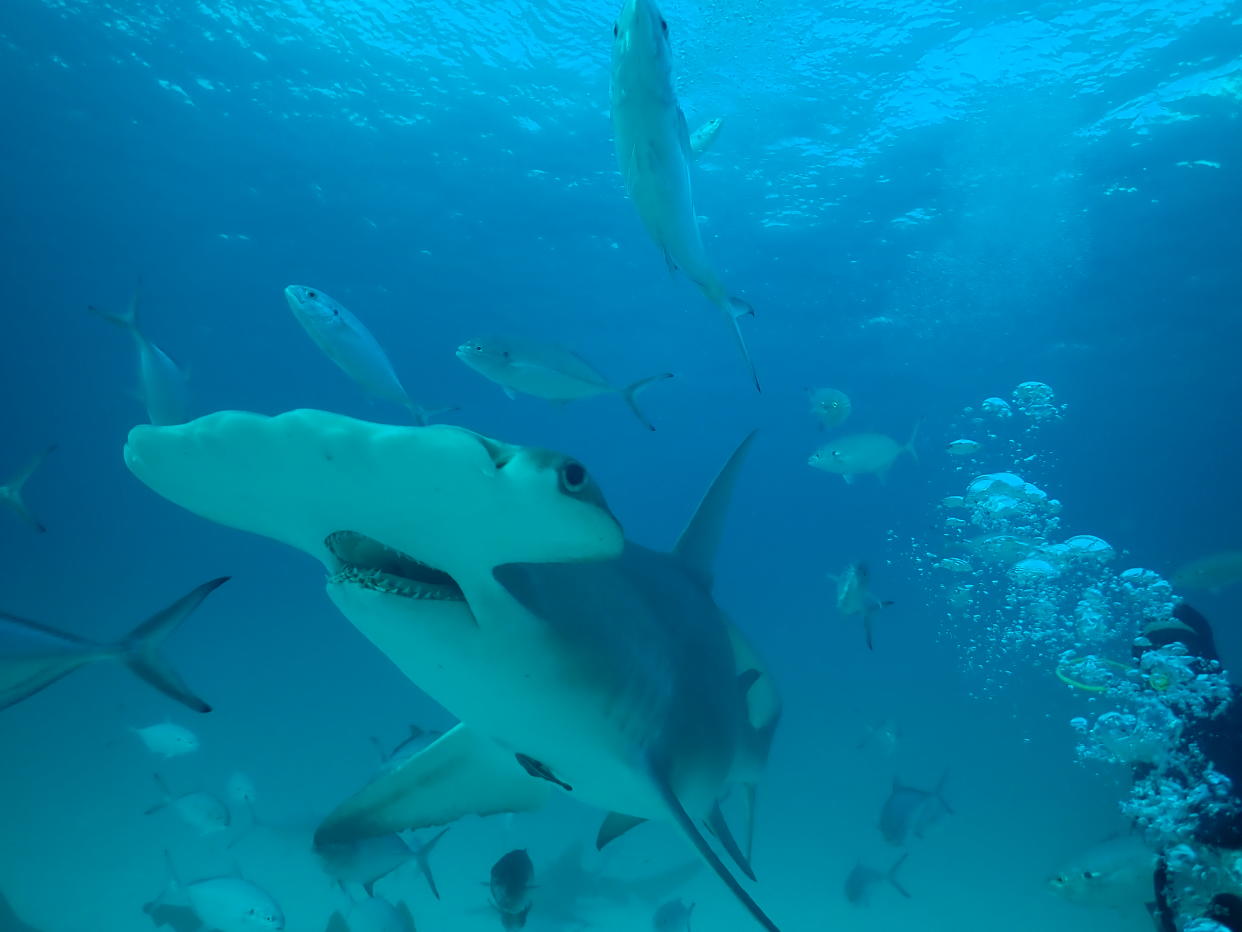
Don't miss arguably the most beautiful shot of SharkFest 2023, which comes from a camera tag FIU's Yannis Papastamatiou places on a free-swimming bull shark. When the footage is retrieved, we ride along as it swims with other bulls visible in the vast blue-tinted distance. "We're developing new technologies around being able to get an even broader view from the back of sharks," Heithaus says. "That footage is just that first glimpse that there are probably really cool things going on."
Bull Shark vs. Hammerhead airs July 3 at 10 p.m. on National Geographic, July 7 at 9 p.m. on ESPN2 and July 28 at 9 p.m. on Nat Geo Wild.
If you love to see great whites in different locations, watch…
Shark Below Zero
August 2021 marked the first confirmed shark bite in Canadian waters in more than 150 years. Skomal and Winton team with local scientists Heather Bowlby and Warren Joyce to find out what's luring them north and how they behave once they arrive. The journey truly begins in Hilton Head, S.C., where shark whisperer Chip Michalove helps tag great whites who make the migration. "Sometimes they sweep into Cape Cod, like they would traveling up I-95 and grab a snack at a rest stop, and then just keep going all the way to the remote reaches of Canada," says Skomal, whose professional memoirChasing Shadows: My Life Tracking the Great White Shark will be published July 11. "It's a very different habitat from South Carolina: colder water, rocky outcroppings, seals are spread out over a broad area and the sharks obviously feed on other things. They're able to adapt."
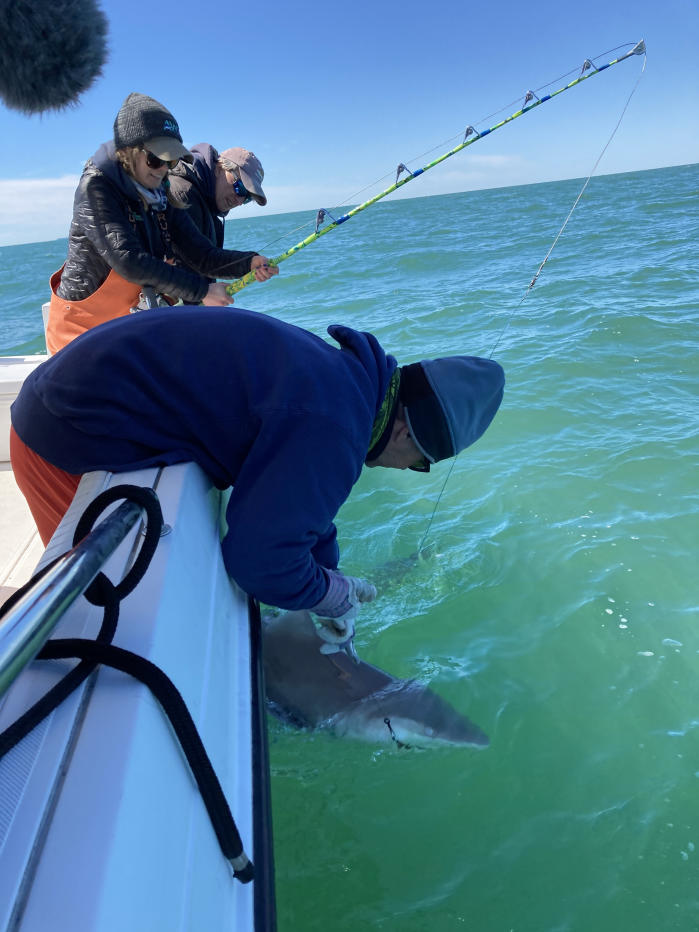
For the first time, a camera tag is placed on a great white in Canada (you've never seen Skomal celebrate more). It's a juvenile, like so many of the white sharks there. "When people think juveniles, they think tiny sharks," Skomal says. "But remember, a male white shark doesn't mature until he's in excess of 12 feet and females 15 feet. So animals that are 8 to 12 feet long and bigger can be juveniles. They're going up there using different predatory tactics. And so it opens all kinds of new territory for us to study the behavior of these animals."
Shark Below Zero airs July 5 at 9 p.m. on National Geographic and July 24 at 8 p.m. on Nat Geo Wild.
If your interest in sharks goes beyond the species we've previously mentioned, watch…
Sharkano: Hawaii
Heithaus and Frances Farabaugh explore why the volcanic Hawaiian islands are an oasis for 40 species of sharks. They swim alongside a gentle giant whale shark, and photograph feisty Galapagos sharks bearing mating scars. Heithaus suits up to bravely hold a bite pad (think: gelatin lollipop) to nab a bite impression from a tiger shark, and they both serve as eyes for freediver Cory Fults, who manages to place a camera tag on an oceanic white tip. A school of scalloped hammerheads provides a stunning visual, but nothing quite compares to the web of lava tunnels on the ocean floor off the Big Island: Heithaus and Farabaugh observe white tip reef sharks just chilling, tucked in to escape predators, and grey reef sharks getting a spa treatment from cleaner fish in a kind of open underwater amphitheater. "It's really an awe-inspiring landscape," Heithaus says, "and then you add sharks? Hard to beat."
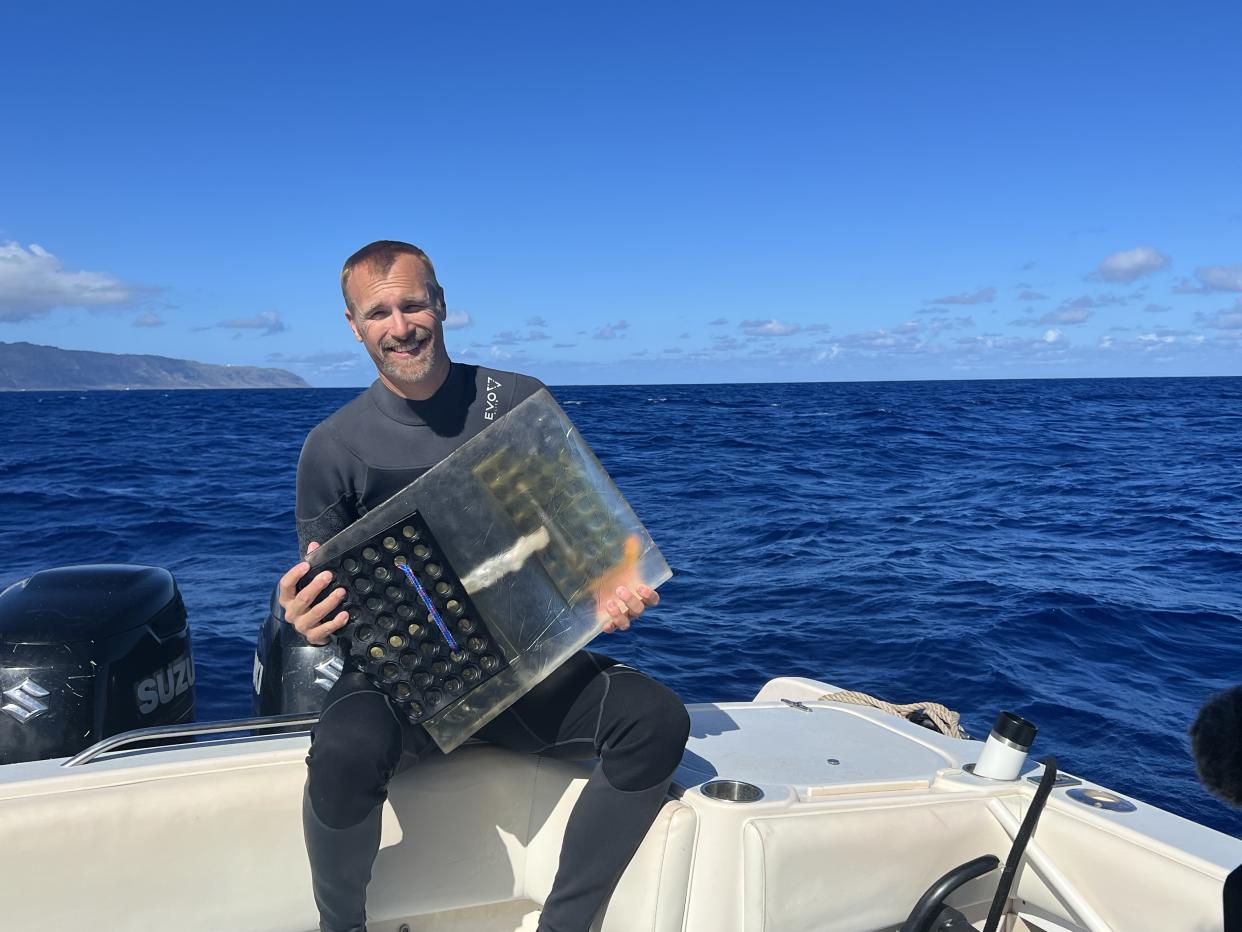
Sharkano: Hawaii airs July 5 at 10 p.m. on National Geographic and July 24 at 9 p.m. on Nat Geo Wild.
